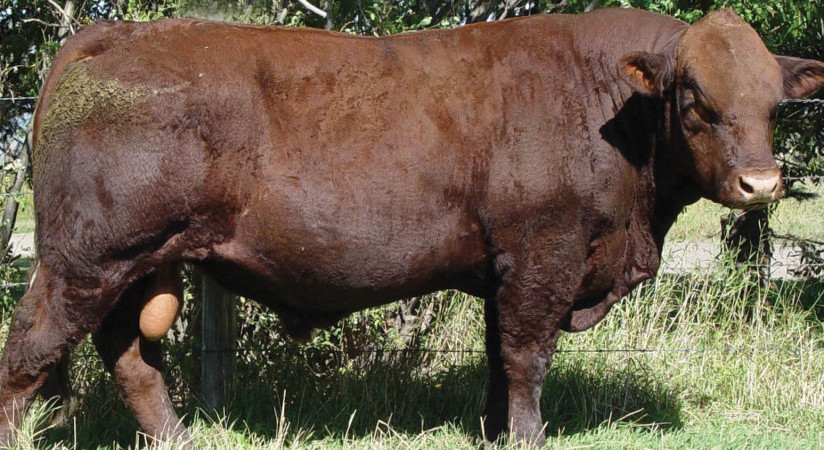

For those still in the early days of being a commercial beef producer, it is often financially impossible to afford higher-priced bulls and breeding females that hold the promise of optimal productivity and carcass quality.
However, this should not be a deterrent, as many lower-priced breeding animals that can contribute to the development of a commercial enterprise are regularly on sale.
It takes time and practice to learn how to visually evaluate a potential breeding animal’s physical strengths and flaws with accuracy. The most important overall consideration is to ensure that the animal is sufficiently structurally sound to enable it to add value to your beef enterprise. A lower-priced animal can still have many beneficial characteristics that will help to develop the commercial herd in the direction that you want it to go in terms of your production environment and goals.
No matter how cash-strapped a potential buyer is, he or she should never resort to buying a breeding animal that a seller originally intended to send for slaughter. These animals are usually so flawed that they would most likely cost money by being unproductive and uneconomical, and also potentially pass these flaws on to their progeny.
Potential breeding stock for a commercial beef herd must be able to generate a positive return for the enterprise, even if this return is marginal in the early years. An animal that is sufficiently structurally sound to walk, graze and produce a calf every year, and which has beefiness to impart to its progeny, is a solid foundation on which to grow and improve the herd.
From head to tail
Female animals should not appear masculine, and bulls should not appear feminine, as this would indicate an imbalance in their hormones that is likely to affect their fertility negatively.
Bulls and breeding females should also have width between their forelegs, and capacity and muscling across the chest. Capacity incorporates good depth, length and thickness of body.
Legs and feet are extremely important aspects to evaluate, this is because an animal that can’t walk properly will be unable to move and graze, and in the case of natural covering, females will struggle to stand under a bull, while bulls will struggle to follow and mount females.
The two claws comprising each hoof should ideally be similar in shape and size, and have smooth and even lines. The claws should stand flat on the ground and show no signs of rolled claw, as this can lead to painful lameness. Correcting this with a hoof trimmer is a temporary measure and the rolled claw will eventually grow back.
Adequate heel depth in hooves is also a desirable trait.
A beef animal should have a torso with capacity, muscling and spring of rib, which allows space for added muscling. Progeny that inherit these traits will weigh more at weaning, and these extra kilograms will increase the income per animal achieved at weaner sales.
A beef animal’s topline and hindquarters comprise the most expensive cuts for consumers. A commercial producer, who aims to achieve maximum per kilogram on-the-hoof prices for his or her slaughter animals, should aim to acquire breeding stock that show a broad and beefy rump.
Bulls
A buyer of a breeding bull should be aware that a two-year-old bull is likely to look noticeably different once it reaches the age of three years. This is because a two-year-old is still developing physically, and its testosterone production has not yet peaked. A three-year-old bull is close to full physical and hormonal development and will therefore appear beefier and more masculine than its younger self.
While a two-year-old can be used as a breeding bull, it will require more care during this time to prevent anything from happening that might stop it from reaching maturity and its full potential. In addition, a two-year-old might not yet have manifested any visually obvious physical problems, and the beef producer should be aware of the risk that these possibly invisible problems could be transferred to the bull’s progeny. It takes an experienced eye to look at a young bull and imagine what it will look like at three years old.
The penis and testicles are the most important aspects of a breeding bull. These should be functional and not have a structure that makes it difficult for the penis to penetrate a breeding female or that is prone to injury and infection from the environment. For example, a penis that cannot fully extend from or retract into the sheath is totally undesirable. A bull with a prolapse of the sheath, which protects the retracted penis, should also be avoided.
A scrotum showing scars from previous injuries or infection is an indicator that the testicles within the scrotum may be damaged. A bull that is missing a testicle, has unevenly sized testicles, or is known to have a non-functioning testicle, should be avoided.
The udder
The udder is as important to a beef breeding female as the testicles are to a bull. A well-formed udder with a strong attachment to the abdomen and small, evenly spaced teats to enable a calf to suckle easily is highly desirable. If the teats are too long, they can make it difficult for a calf to latch.
Prospective buyers should avoid females with bottle teats and problem udders, as the calves of these animals will have to be fed manually, adding to the cost of labour. Any females already in the production herd and showing these traits should be culled as soon as possible.
 Contact Jaguza Support
Contact Jaguza Support